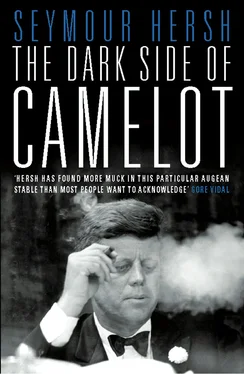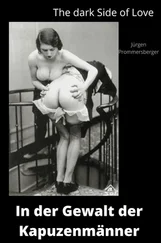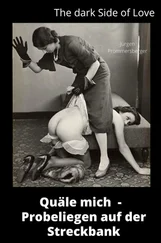“But,” Scott told me, “this was not Marilyn Monroe. Norma Jean would never have allowed Marilyn to look like that, but she did this one time. So I saw [Norma Jean] as a frightened, insecure, young puppeteer that was running this machine known as Marilyn Monroe. It was very touching and somewhat sad. And I liked her all the more for it.”
Monroe’s affair with Kennedy was no secret in Hollywood. In early January 1961, before the inauguration, Michael Selsman was informed about the relationship. “It was the first thing I was told,” Selsman said. “We had to be careful with this. We had to protect her, we had to keep her [private life] out of print. It’d be disastrous for me. It wasn’t hard in those days. It was a different era. Today it would be impossible to keep anything resembling that a secret.” Patricia Newcomb, who worked in the same public relations office with Selsman, also recalled knowing that her client “had been with the president,” and added: “It never occurred to me to talk about it. I couldn’t do it.”
James Bacon, who spent much of his career covering Hollywood for the Associated Press, said in an interview for this book that Monroe, whom he had befriended early in her career, had given him a firsthand account of her relationship with Kennedy as early as the campaign. “She was very open about her affair with JFK,” Bacon told me. “In fact, I think Marilyn was in love with JFK.” Asked why he didn’t file a story about the affair, Bacon said that in those days, “before Watergate, reporters just didn’t go into that sort of thing. I’d have to have been under the bed in order to put it on the wire for the AP. There was no pact. It was just a matter of judgment on the part of the reporters.”
Bacon added that he understood Kennedy’s “fascination with Hollywood. This is where the beautiful girls are, you know, and that’s why JFK loved it out here. He was a man who was addicted to sex, and if you want sex, this is the place to come.”
Kennedy was placing his political well-being in the hands of a group of Hollywood actresses, reporters, and publicists. His confidence that the affair with Monroe would remain secret was all the more perplexing because he was, even before he declared his candidacy, the target of a letter-writing campaign by a middle-aged housewife named Florence M. Kater, who decided in 1959 that her mission in life would be to force the Washington press corps to deal with Kennedy’s womanizing. Kater learned more than she wanted to know about the senator’s personal life after renting an upstairs apartment in her Georgetown home to Pamela Turnure, an attractive aide in Kennedy’s Senate office. Kennedy and Turnure were conducting an indiscreet affair that involved many late-night and early-morning comings and goings, to Kater’s consternation. Turnure moved to another apartment a few blocks away. In late 1958 Kater ambushed Kennedy leaving the new apartment at three A.M. and took a photograph of the unhappy senator attempting to shield his face with a handkerchief.
The encounter rattled Kennedy, and he struck back. A few weeks later, Kater alleged, she and her husband were accosted on the street in front of her home by the angry Kennedy, who, waving his fore-finger, warned her “to stop bothering me. If you do it again,” Kater quoted Kennedy as saying, “or if either of you spread any lies about me, you will find yourself without a job.” Kennedy eventually asked James McInerney, the former Justice Department attorney who had been retained in 1953 by Joe Kennedy, to try to muzzle Kater; the loyal McInerney spent dozens of hours in an attempt to convince her to stop her campaign.
McInerney met seven times with Kater, she later wrote, but for once the usual Kennedy mix of glamour, power, and money didn’t work. In May of 1959, Kater mailed a copy of the photograph and an articulate letter describing her encounter with Kennedy to fifty prominent citizens in Washington and New York, including editors, syndicated columnists, and politicians. Her letter and photograph also ended up on the desk of J. Edgar Hoover, as similar letters would over the next four years. The FBI, of course, began keeping a file on Kater, one obtained under the Freedom of Information Act for this book. In the letter Kater explained that, as an Irish Catholic, she had been a “warm supporter” of Kennedy; she had taken the photograph in the belief that “shock treatment” was needed. “But Senator Kennedy thought his behavior was none of our business,” Kater wrote. “We think he’s wrong there; it’s part of the package when you’re a public figure running for the Presidency.”
Kater became even more obsessed as Kennedy neared the Democratic nomination, and she continued sending out scores of letters complaining that the senator was a hypocritical womanizer who was morally unfit to be president. Kater was not taken seriously by the national press corps, but she came close to attracting media attention. On May 14, 1960, just four days after Kennedy won the West Virginia primary, she approached him at a political rally at the University of Maryland carrying a placard with an enlarged snapshot of the early-morning scene outside Pamela Turnure’s apartment. Kennedy ignored her, but a photograph of the encounter was published in the next afternoon’s Washington Star , along with a brief story describing her as a heckler. Kennedy’s aides denounced the photograph on her placard as a fake, Kater later wrote, and no questions were ever asked of the candidate, although Kennedy’s ongoing relationship with Turnure was no secret to the reporters covering his campaign or to campaign aides.
For all his apparent anger at Kater, Kennedy seemed to enjoy the added tension. Spalding told me of his concern at the time about the immense political liabilities posed by his friend’s constant womanizing. “I used to think he was crazy to do this stuff.” The risks were obvious: Kennedy’s campaign stance as a practicing Catholic and a responsible husband and father would be fatally undercut by a sex scandal. Steeling his courage, Spalding raised the issue at one point with Kennedy. “Well, if you’re worried about this,” Kennedy responded, “let me show you these pictures.” The candidate then pulled out a series of photographs—those mailed by Kater—showing him leaving the Turnure apartment.
Kennedy came much closer to exposure than he knew. Kater’s photograph in the Star stimulated an editor’s curiosity, and Bob Clark, a former White House reporter, was assigned to interview her. “I found her interesting and a little flaky,” Clark, now with ABC News, said in a 1997 interview for this book. “I believed her story.”
That story was complicated, Clark said, by the fact that Kater was a collector of Impressionist paintings and casually admitted that she had initially offered to drop her protests over Kennedy’s involvement with Turnure if the Kennedy family would buy her a Modigliani. Jack Kennedy was a “good Catholic” and so was she, Kater told Clark, and she’d “let it go” for the art. It was that request, among others, Kater told Clark, that was being negotiated with James McInerney. “The family said no,” Clark quoted Kater as saying, but only after protracted negotiations.
Kater’s story was credible, Clark told me, because it was not just a question of her word against Kennedy’s: Kater told Clark that she and her husband had secretly planted two tape recorders in the upstairs apartment while Turnure was spending nights there with Kennedy. The landlords overheard the senator in both the living room and the bedroom. Kater invited Clark to return later to listen to the recordings.
Despite her obvious eccentricity, Clark told me, he was persuaded that it was one hell of a story. He telephoned his editor, Charles Seib, and—as all reporters do—told him what he had, including the fact that Kater had been refused a painting. He was put on hold, while Seib checked with his superiors. A few moments later, Seib returned to the telephone and ordered him “to drop the story,” Clark said. “He wouldn’t even let me go back to listen to the tapes.”
Читать дальше












